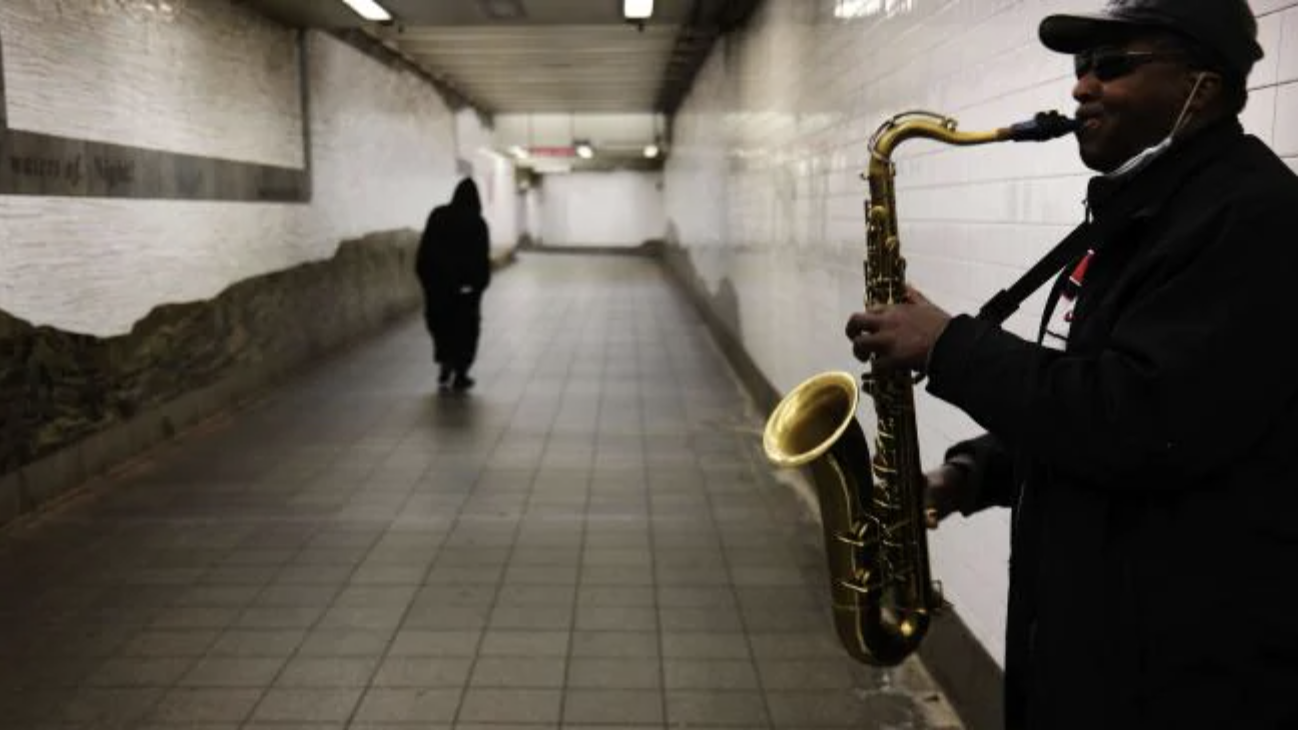
This article is more than
6 year old
Global health experts and authorities have said it was “inevitable” New York City and its suburbs would become the epicentre of the deadly COVID-19 epidemic in the US.
Coronavirus has well and truly spread throughout the city that never sleeps, the world watching on as drone footage of coffins being stacked and buried in trenches on an island emerged and the rising death toll prompted hospitals, short on space, to store bodies in refrigerated trucks.
Governor Andrew Cuomo said the pandemic, which has killed more New Yorkers than 9/11 and infected thousands, is “unlike anything you’ve ever seen before,” saying the virus has spread through the city “like fire through dry grass with a wind behind it”.
While population density and a constant influx of tourists – eight million people live in an area totalling 480 square kilometres and 55 million more visit each year – have been blamed for the impact the virus has had on the city, a new study has highlighted its reliance on public transport as the force behind the outbreak.
“New York City’s multi-tentacled subway system was a major disseminator – if not the principal transmission vehicle – of coronavirus infection during the initial takeoff of the massive epidemic that became evident through the city during March,” MIT economist and physician Jeffrey E. Harris wrote in a paper published by The National Bureau of Economic Research.
RELATED: Follow the latest coronavirus updates
RELATED: How virus ripped through one bus

number of people entering subway turnstiles in March in NYC. Picture: MITSource:Supplied |

number of people entering subway turnstiles in March in NYC. Picture: MITSource:Supplied |
The study was based on daily ridership data at different stations, underscoring the threat of infection on public transport – where people are prone to being in close proximity and touching several surfaces through which COVID-19 could spread, Dr Harris wrote.
Comparing those with infection trends in areas around the city, rate of disease transmission was related to the number of trips and average number of stations per trip along the subway line; the fact that passengers who board from remote stations spend longer in a train and therefore increase the time when infections can take place; and crowded trains raising the number of infections.
The paper also concluded that local train lines appeared to have a “higher propensity to transmit infection” than express lines.
“The near shutoff of subway ridership in Manhattan – down by over 90 per cent at the end of March – correlates strongly with the substantial increase in the doubling time of new cases in the borough,” the study said.
“We know that close contact in subways is fully consistent with the spread of coronavirus, either by inhalable droplets or residual fomites left on railings, pivoted grab handles, and those smooth, metallic, vertical poles that everyone shares.”
Dr Harris said that bus hubs may have served as a secondary transmission route of the virus “out to the periphery of the city”.
RELATED: Virus graph predicts rising death toll
RELATED: City where virus death toll is ‘exploding’
 |
Separate studies based on situations in China have also found environments like trains and buses enable COVID-19 to spread, especially when crowded.
“It can be confirmed that in a closed environment with airconditioning, the transmission distance of the new coronavirus will exceed the commonly recognised safe distance,” researchers wrote in a paper published in Practical Preventative Medicine.
“The possible reason is that in a completely enclosed space, the airflow is mainly driven by the hot air generated by the airconditioning. The rise of the hot air can transport the virus-laden droplets to a greater distance.”
In an article for The Conversation, authors came to a similar conclusion, writing that the “interiors of trains and buses, and stations and stops along the network, are the perfect environment for a droplet-spread disease like COVID-19 to thrive. Masses of people congregate in these areas, increasing the risk of direct contact with an infected person.”
However, evidence of a relationship between public transport use and respiratory infection is “actually relatively weak”, the authors wrote, with commuters who used busy stations at the greatest risk.
In Australia, while public transport services remain running, increased cleaning has been implemented on buses, trains and ferries and government advice is to travel outside of peak hours and avoid coming within 1.5m of other people at all times.
“In line with principles of social distancing, I think it’s important to minimise our time outside and reducing the number of people we interact with,” infectious diseases epidemiologist Meru Sheel told ABC.
“So if we’re going outside or public transport can be avoided then we all must reconsider. We all must play a part in this.”